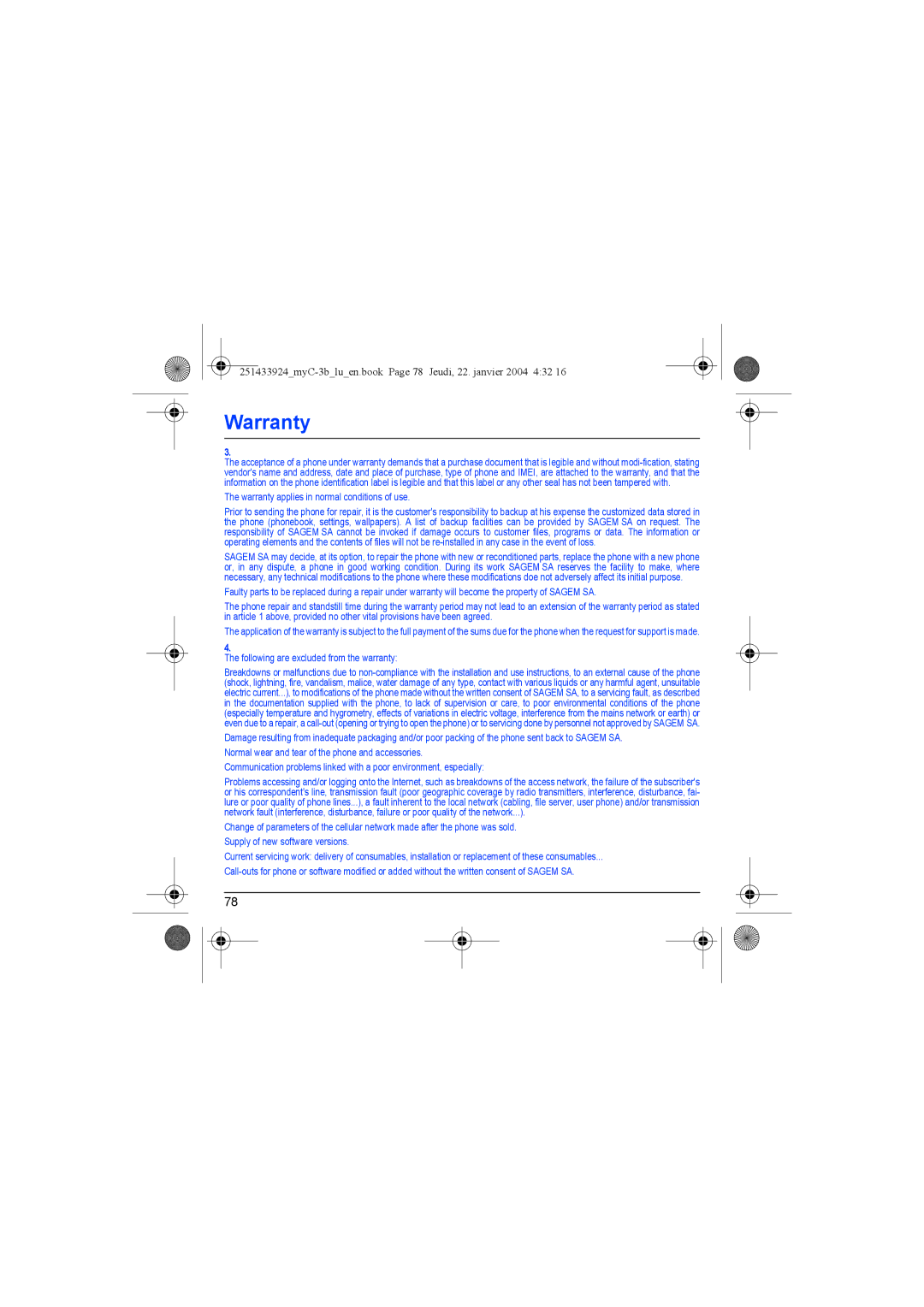myC-3b specifications
The Sagem myC-3b is a distinctive mobile phone that captures attention with its unique design and features. Launched in the early 2000s, this device is part of Sagem's commitment to delivering stylish and functional handsets that cater to consumers looking for style and substance.One of the standout characteristics of the myC-3b is its clamshell form factor, which not only adds an element of flair but also enhances portability. The phone opens to reveal a vibrant internal display that is user-friendly and easy to navigate. With a resolution that, while modest by modern standards, provided clear visuals and intuitive interaction for its time.
The myC-3b is equipped with several key features that appeal to users. For starters, it boasts a camera capable of capturing photos and videos, meeting the growing demand for mobile photography during its era. With the advent of multimedia capabilities, users could take snapshots of memorable moments and share them, making the device versatile for personal use.
In terms of connectivity, the myC-3b supports GPRS technology, enabling users to browse the internet, send emails, and access data services, paving the way for a more connected experience. This was especially significant at a time when mobile internet was still in its infancy, allowing early adopters to stay in touch with the digital world.
The interface of the myC-3b features a robust yet straightforward menu system that facilitates easy access to various functionalities, including text messaging, call management, and settings. The phone supports SMS and MMS, allowing for instant communication and multimedia messaging, making it suitable for users who wanted to keep in touch in a fast-paced environment.
Another noteworthy aspect of the Sagem myC-3b is its battery life. The device was designed to last through extended usage, offering reliable performance without the constant need for recharging. This feature stood out during a time when battery longevity was a crucial factor for mobile users.
Overall, the Sagem myC-3b represents a blend of innovative technology and stylish design. It served as a stepping stone in the evolution of mobile communication devices during its time, combining essential features with a compact, attractive design. Although technology has significantly advanced since the launch of the myC-3b, its contribution to mobile telecommunications remains noteworthy, marking a significant phase in the journey of personal communication devices.

